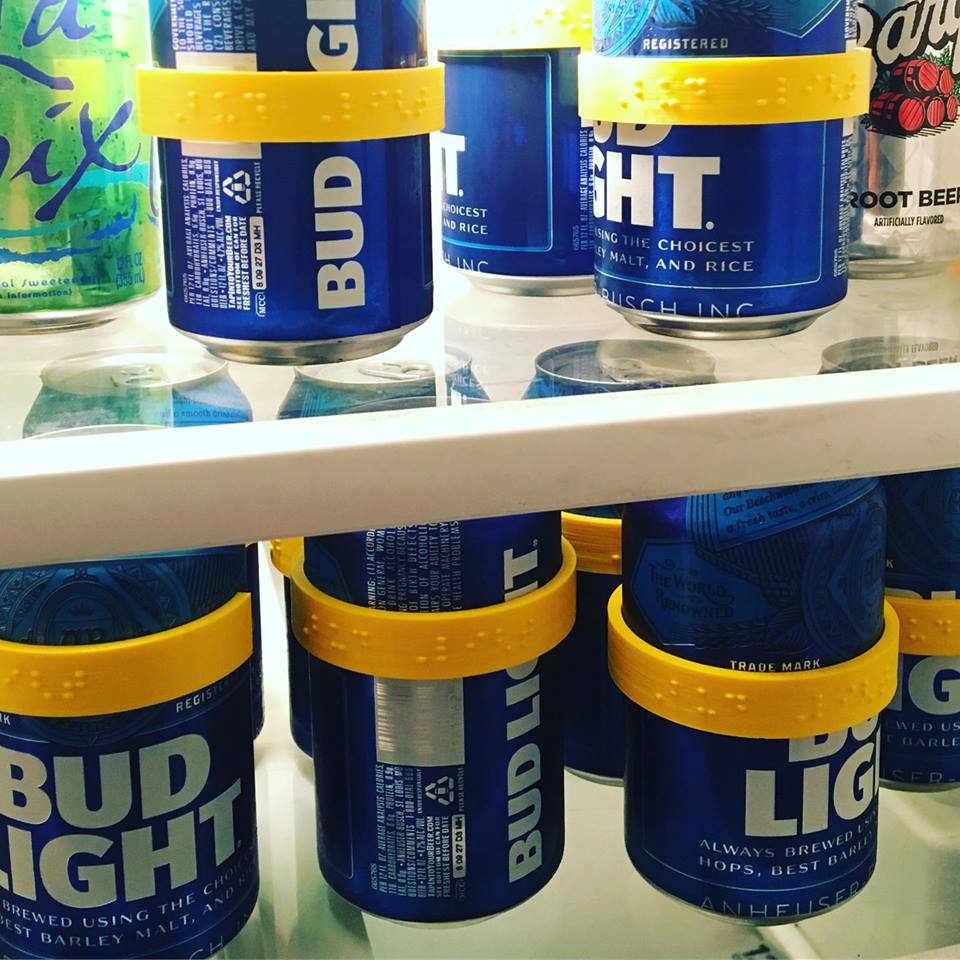While new technologies have made the lives of visually impaired persons far better, there’s still a long way to go. Even though all sorts of devices like braille watches and reading aids compensate for a lack of sight, everyday grocery items and containers are sadly not easily identifiable for many people with such disadvantages. However, start-up Candoable is doing their part and employing 3D printing to address the issue. The company prints their Cando reusable Braille labels to tag everyday household items for easier identification.
Founder Lisa Dalton started the company in May of 2018. She originally came up with the 3D printed label system to help someone she knew personally and expanded from there.
Lisa was familiar with the ins and outs of 3D printing due to her work with custom bricks and stamps. The labels are easy enough to make and simple for people to place on the designated items. Later, the labels made waves at conventions hosted by the national federation of the blind. While they are still patent-pending, Lisa set up a webstore for purchase.
In June 2018, when I reorganized the cans in his pantry while helping him make a grocery list, I was introduced to a problem that so many visually impaired people face: identifying items in containers. Almost everything we use is contained in a jar, can, box, or bottle.Lisa Dalton, founder Candoable
Visually Assistive 3D Printing Applications
The actual Candoable labels (or candos) look like PLA semicircular bracelets. Users can place the reusable Cando braille label on the corresponding jar, bottle, lid or can. They go around most cylindrical containers with ease, displaying the contents in braille on the front. Candoable also suggest that, if necessary, the visually impaired ask those around them (pharmacists, grocery baggers or delivery persons) to assist in applying the labels, which is why is why there is text inside each label in regular English.
They are a great solution for an everyday problem that people with disabilities encounter. Once the container is empty or no longer needs the label, users can place it on an optional concrete and wood holder that they can purchase off of the website. The braille embossed labels can then act as a shopping list, denoting the items already used.
Candoable use a variety of different printers at their disposal, producing the labels from a few different specialty PLAs. Dalton hasn’t set the production methods in stone yet, so it opens up the field for experimentation with different set-ups and materials to find the best practices.
Dalton 3D prints the Cando braille labels at Gangplank Queen Creek, a collaborative workspace in the heart of downtown Queen Creek, Arizona. Since she started Candoable, the project has garnered much acclaim. Dalton has received nominations from the CO+HOOTS Foundation and won 3rd place in Pitch Gangplank 2018, receiving $1500.
3D printed applications yielding faster and cheaper solutions for many who most need them, especially those with special needs. While audio devices and labellers can be exorbitant, 3D printers can quickly aid in cost-effective solutions. Lisa Dalton agrees, saying “3D printing has changed my life, and I’m always happy to encourage problem solving through it.”
Featured image courtesy of Candoable, retrieved via their website and facebook page.











